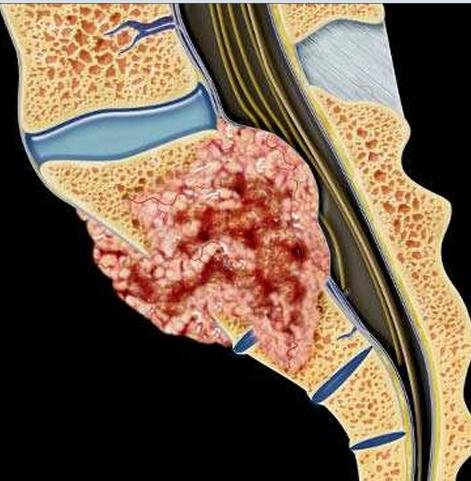High Grade Astrocytoma
High Grade Astrocytoma
Pediatric spinal high-grade astrocytomas are rare but aggressive malignant tumors that arise from astrocytic glial cells within the spinal cord. Unlike their low-grade counterparts, high-grade astrocytomas such as anaplastic astrocytoma (WHO Grade III) and glioblastoma multiforme (WHO Grade IV) grow rapidly, invade surrounding tissue, and are more likely to recur after treatment. In Bangladesh, these tumors are often diagnosed at an advanced stage due to lack of early awareness, limited access to pediatric MRI facilities, and absence of specialized pediatric neurosurgery services in many regions. Dr. Md. Nafaur Rahman, a leading pediatric neurosurgeon, now provides comprehensive care and advanced surgical options for children with spinal cord astrocytomas, offering new hope for affected families across the country. What is a Spinal High-Grade Astrocytoma? High-grade astrocytomas are malignant glial tumors that originate from astrocytes in the central nervous system. When they occur in the spinal cord of children, they present significant challenges due to the delicate location and rapid progression. Key Features: Infiltrative growth – spreads into surrounding spinal cord tissue Rapid progression – neurological symptoms can worsen quickly Common sites – cervical and thoracic spinal cord Often affects children aged 5–15 years Requires urgent diagnosis and aggressive management Causes and Risk Factors Mostly sporadic, with no known cause Genetic predisposition in some cases (e.g., Li-Fraumeni syndrome) Radiation exposure or previous CNS tumors may increase risk Not inherited or contagious Symptoms of Spinal High-Grade Astrocytoma Due to their fast growth, symptoms tend to progress rapidly and are often neurological in nature, including: Persistent or worsening back/neck pain Rapid-onset weakness or paralysis in arms or legs Numbness, tingling, or loss of sensation Gait disturbance or frequent falls Spinal deformity or visible scoliosis (in growing children) Bladder and bowel incontinence In rare cases, spinal cord compression syndrome In Bangladesh, such symptoms may be misdiagnosed as spinal tuberculosis, injury, or polio, especially in rural and semi-urban areas. Diagnosis of Pediatric Spinal Astrocytoma in Bangladesh Accurate and timely diagnosis is essential to prevent irreversible neurological damage. Clinical Evaluation Neurological examination: motor and sensory function Spinal reflex assessment Evaluation of posture, gait, and pain response Imaging Studies MRI with contrast – essential for identifying tumor location, size, and infiltration Whole spine MRI – to rule out spread MR spectroscopy or diffusion imaging – may help differentiate tumor types CT scan – for evaluating bony changes or calcification Spinal biopsy – required for definitive diagnosis and grading Treatment Options in Bangladesh Management of high-grade spinal astrocytomas requires a multidisciplinary approach, often involving surgery, chemotherapy, and radiotherapy. Surgical Management by Dr. Nafaur Rahman While complete resection may be difficult due to infiltration into normal cord tissue, surgery is performed to: Obtain a biopsy for histopathology Debulk the tumor to relieve pressure and preserve function Stabilize the spine in cases of structural damage Prevent progression of neurological symptoms Advanced microsurgical tools and intraoperative neuromonitoring are used to maximize tumor removal while protecting nerve function. Postoperative Adjuvant Therapy Radiotherapy – tailored to the child's age and tumor location Chemotherapy – often used in conjunction, especially in younger children Targeted therapies or clinical trials (as available) Prognosis and Outcomes The prognosis for pediatric spinal high-grade astrocytoma remains guarded, but outcomes improve significantly with early intervention, multimodal treatment, and specialized follow-up. Survival depends on tumor grade, location, and extent of resection Quality of life improves with physiotherapy, mobility aids, and bladder care Frequent imaging follow-up is required to detect recurrence or progression Challenges in Bangladesh Limited pediatric MRI availability in non-urban districts Low index of suspicion among general practitioners Delayed referrals to pediatric neurosurgery specialists Financial constraints for surgical and postoperative therapy Lack of multidisciplinary pediatric oncology centers Why Choose Dr. Md. Nafaur Rahman? Leading expert in pediatric spinal tumor surgery in Bangladesh Performs complex intramedullary tumor excisions with precision Operates at National Institute of Neurosciences & Hospital (NINS) and Bangladesh Paediatric Neurocare Centre Collaborates with pediatric oncologists and physiotherapists Known for compassionate, ethical, and child-centered care Offers affordable solutions for both urban and rural patients Appointment & Contact Dr. Md. Nafaur Rahman Assistant Professor, Pediatric Neurosurgery National Institute of Neurosciences & Hospital (NINS) Chief Consultant, Bangladesh Paediatric Neurocare Centre 📞 For Appointment/Serial: 📱 01912988182 | 01607033535 🌐 Website: www.neurosurgeonnafaur.com










